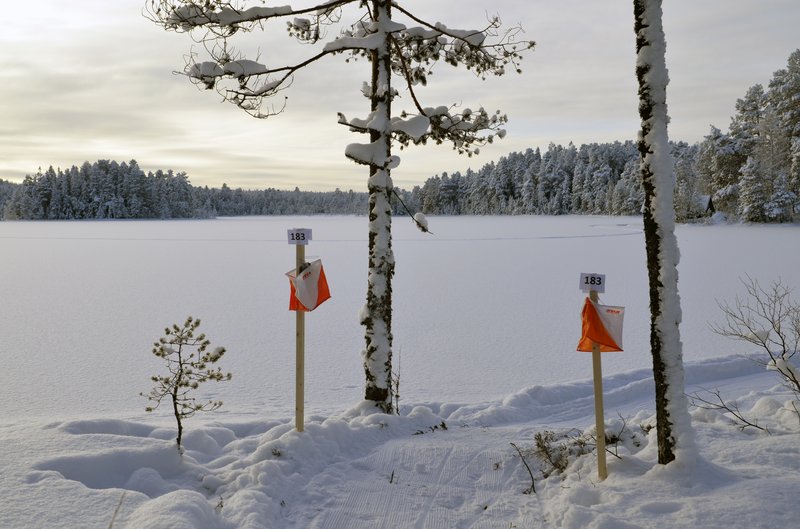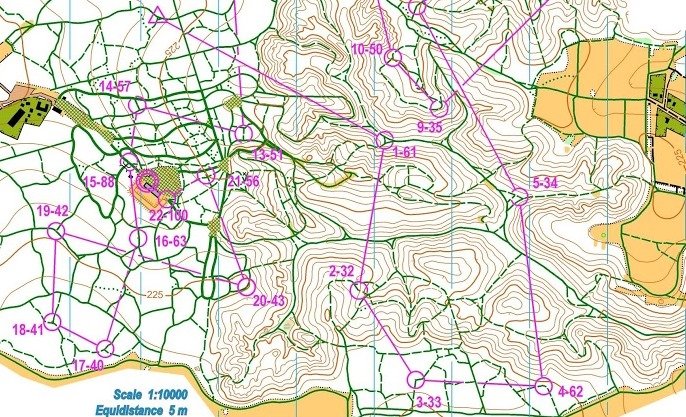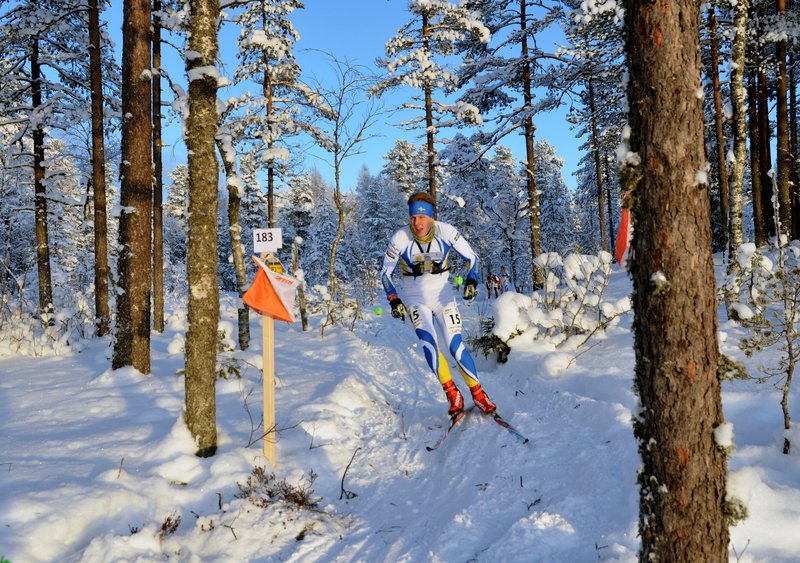About Ski-O
Orienteering
with cross country skis on, where you have a large network of ski tracks of
different track quality. Relatively simple orienteering, but the speed, different
track quality and the fact that you have to ski at the same time makes it
challenging and intense.

The map
The map for
ski orienteering is basically the same as the foot orienteering map, but with the
speed/quality of the ski tracks accentuated with solid, dashed or dotted green
lines.

Gear
Skiis
Nowadays,
most people use skiis for the freestyle/skating technique primarily, even though
there are competitors who sometimes use a little kick wax to better be able to
get uphill in narrow tracks. When choosing skis for ski orienteering you need
to take into account that the tracks often are soft and narrow. Today everyone
uses the same type of skis as those used in cross-country skiing. The ski
orienteers use the skis of the same length as their own body height or a few
centimetres shorter.
Poles
During most
competitions, the track system is a mixture of narrow and wide tracks. There is
usually a larger proportion of narrow tracks. The narrow tracks are usually
0,8-1,0 meters wide, which means that you can not fully use your leg strength
and the upper body therefore must take a greater workload in comparison to
cross-country skiing, especially in uphill slopes. It is therefore very
important to have poles of the right length to get the full effect of the upper
body output.
The optimal
length of the pole for ski orienteering is of individual preference, and varies
a lot depending on the person’s strength, size, and technique. For most people,
it is too difficult to climb steeper uphill slopes with the pole length used in
freestyle in cross-country skiing. The length recommended in cross-country
skiing for freestyle is 0,9-0,91 of the body height, which for most people
within ski orienteering is too long. As a guideline you use poles that are
20-25 cm shorter than your body height, or even shorter, but this is something
that individually needs to be tried out.
Map holder
To be able to
read the map while skiing, all ski orienteers nowadays use a map holder attached
around the upper body.

Distances
The
competitive sport of ski orienteering involves several different distances and several
different forms. Individually, they compete in four different distances. The
individual distances are usually performed with individual start, with 1–3-minute
start intervals. Mass start also occurs, preferably on middle or long distance.
Ultra-long distance
Takes place only at the world cup, usually the last race of the season.
Long distance
The original
distance of competition. For senior aged men and women, the estimated winning
times are supposed to be between 135-155 minutes.
Middle distance
Winning times of about 40-45 minutes.
Sprint distance
10-15 minutes winning time.
Relay
Relays can
be arranged with different numbers of legs. At championship level, there are
three legs in the World Championship and European cup for both men and women,
while in the Swedish championship there are 2-man relays with four legs (2 legs
per participant).
Mixed relay
A sprint
relay arranged mainly at the World championship, European Championship and
World cup. Usually there are six legs, each 6-8 minutes long.
